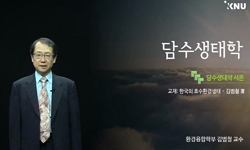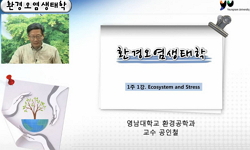Although evolution of construction materials brought about development of modern architecture, they caused destruction of the environment and pollution. This problem is not a new one in terms of ecological esthetics and materials of sustainable archit...
http://chineseinput.net/에서 pinyin(병음)방식으로 중국어를 변환할 수 있습니다.
변환된 중국어를 복사하여 사용하시면 됩니다.
- 中文 을 입력하시려면 zhongwen을 입력하시고 space를누르시면됩니다.
- 北京 을 입력하시려면 beijing을 입력하시고 space를 누르시면 됩니다.

한국 전통 건축 공간에 나타난 건축 재료의 특성에 관한 연구 = A study on characteristics of construction materials in Korean traditional construction area - Focused on a viewpoint of ecological esthetics -
한글로보기https://www.riss.kr/link?id=A99626656
- 저자
- 발행기관
- 학술지명
- 권호사항
-
발행연도
2012
-
작성언어
Korean
- 주제어
-
등재정보
KCI등재
-
자료형태
학술저널
- 발행기관 URL
-
수록면
224-232(9쪽)
- 제공처
- 소장기관
-
0
상세조회 -
0
다운로드
부가정보
다국어 초록 (Multilingual Abstract)
The current study examined the characteristics by dividing them into tangible and intangible elements based on expressive features of elements of nature. The characteristics found by this process are not simply notion of physical materials, but plays a key role aesthetically and ecologically. Nature and materials take circulation of the law of nature, regulate energy, increase efficiency and play a major role in an economic way. Nature in itself becomes natural alternative energy, and plays its role in an invisible fashion. It examined how expressive characteristics of construction materials are reflected through analyzing residential space and Korean traditional garden having relationships with Eastern viewpoint of nature in relation to Korean traditional construction materials from a perspective of ecological esthetics.
Findings of the above study indicate that expressive characteristics of Korean traditional construction materials from a perspective of ecological esthetics are that nature, space, humans coexist and live together and they will provide a clue to an alternative to solve ecological and environmental problems modern society will have in the future. Through this process, it provided a possibility that traditional space and materials can be succeeded in creative and new ways, and it found out the way for nature, space, and humans to coexist and a possibility of ecological esthetics. It addition, it will provide a key base as an alternative of sustainable design of the future.
Although evolution of construction materials brought about development of modern architecture, they caused destruction of the environment and pollution. This problem is not a new one in terms of ecological esthetics and materials of sustainable architecture in light of the Eastern view of nature and this idea became a background of this study. The basic concept is to try to find out their characteristics from a perspective of ecological esthetics in relation to traditional building materials that nature, architecture, and humans coexist and live with each other to balance. Based on ecological esthetics and precedent studies on materials of traditional architecture, we investigated connections, expressive methods and characteristics in traditional residential construction space. This attempt has meanings in that it can propose a new framework of forming various viewpoints and spatial perceptions in relation to esthetics and traditional construction materials.
The current study examined the characteristics by dividing them into tangible and intangible elements based on expressive features of elements of nature. The characteristics found by this process are not simply notion of physical materials, but plays a key role aesthetically and ecologically. Nature and materials take circulation of the law of nature, regulate energy, increase efficiency and play a major role in an economic way. Nature in itself becomes natural alternative energy, and plays its role in an invisible fashion. It examined how expressive characteristics of construction materials are reflected through analyzing residential space and Korean traditional garden having relationships with Eastern viewpoint of nature in relation to Korean traditional construction materials from a perspective of ecological esthetics.
Findings of the above study indicate that expressive characteristics of Korean traditional construction materials from a perspective of ecological esthetics are that nature, space, humans coexist and live together and they will provide a clue to an alternative to solve ecological and environmental problems modern society will have in the future. Through this process, it provided a possibility that traditional space and materials can be succeeded in creative and new ways, and it found out the way for nature, space, and humans to coexist and a possibility of ecological esthetics. It addition, it will provide a key base as an alternative of sustainable design of the future.
목차 (Table of Contents)
- Abstract
- 1. 서론
- 2. 생태미학에 근거한 한국 전통 건축 공간의 형성 요인
- 3. 생태 미학적 측면에서 본 한국 전통 건축의 건축 재료 표현 및 특성
- 4. 사례를 통한 한국 전통 공간과 건축 재료의 생태 미학적 표현 특성
- Abstract
- 1. 서론
- 2. 생태미학에 근거한 한국 전통 건축 공간의 형성 요인
- 3. 생태 미학적 측면에서 본 한국 전통 건축의 건축 재료 표현 및 특성
- 4. 사례를 통한 한국 전통 공간과 건축 재료의 생태 미학적 표현 특성
- 5. 결론
- 참고문헌
동일학술지(권/호) 다른 논문
-
도심 엔터테인먼트 쇼핑센터(UEC)의 테넌트 배치 형태에 관한 연구
- 한국실내디자인학회
- 이현수(Lee, Hyunsoo)
- 2012
- KCI등재
-
- 한국실내디자인학회
- 최현욱(Choi, Hyun-Wk)
- 2012
- KCI등재
-
- 한국실내디자인학회
- Kim, Eunice Ja Young(김자영)
- 2012
- KCI등재
-
- 한국실내디자인학회
- 송병준(Song, Byung-Joon)
- 2012
- KCI등재




 ScienceON
ScienceON DBpia
DBpia







